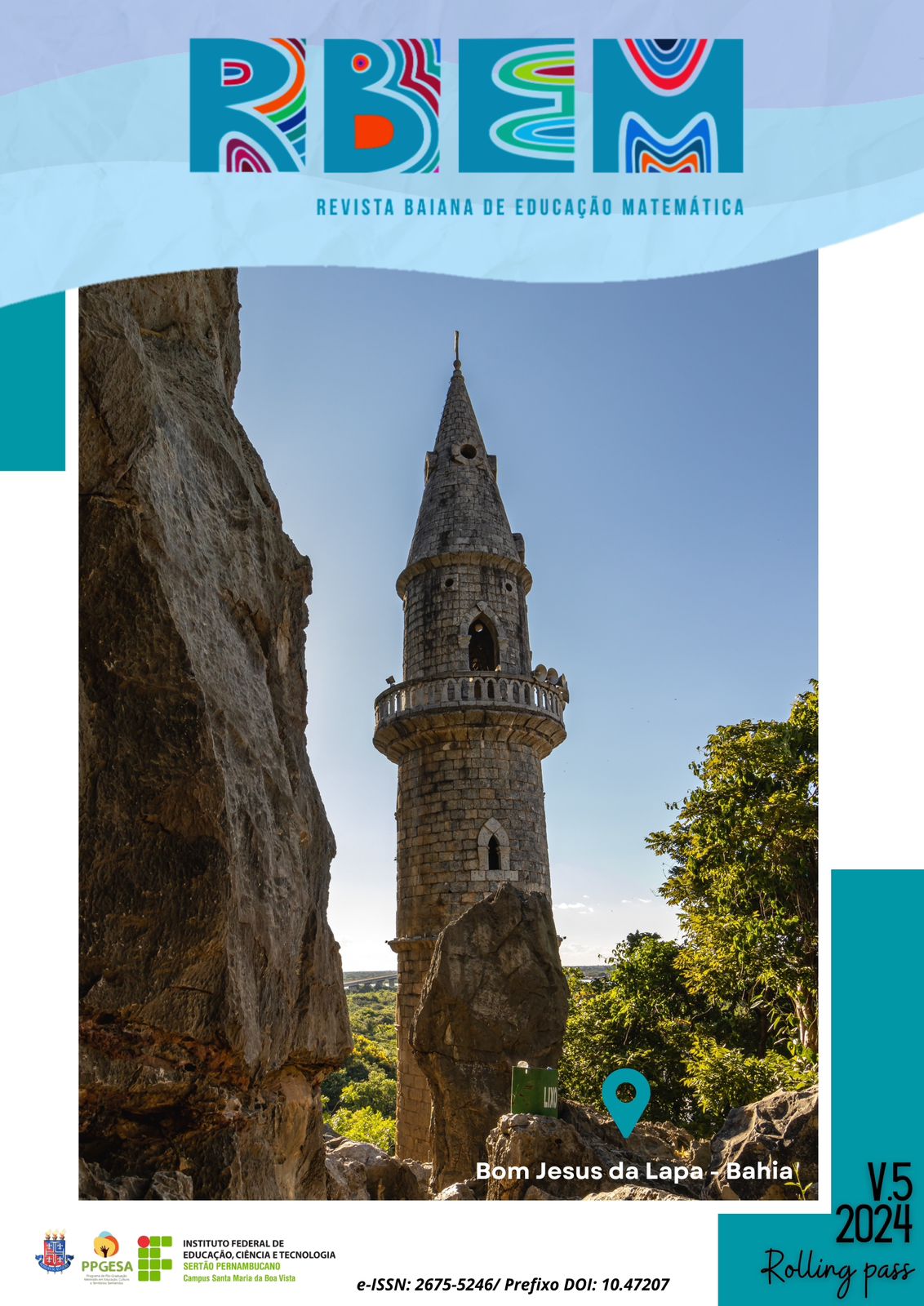A suggested activity using the nautical ring for the study of geometry
Main Article Content
Abstract
This article presents an excerpt from an undergraduate research project that is still in progress, which seeks to develop an interface between History and Mathematics Teaching. Here, in the articulation between these two areas, we seek to study the Nautical Ring, with the intention of using this ancient historical mathematical instrument in didactic situations in the classroom in the future. The aim of this study is to present, using the Nautical Ring, a didactic situation aimed at teaching Geometry in Basic Education. To this end, we will first provide some information about the work in which the Nautical Ring is described, about the instrument itself and about the author who proposed it. Next, we talk about elements related to the construction of the Nautical Ring and, finally, we talk about the didactic sequence for teaching Geometry. During all these moments of the study, we used a qualitative research approach, and in the specific case of the didactic situation, we also used the Basic Unit of Problematization (BUP). The results show that working with the instrument can help teach some geometric concepts, such as the circle and the angle. As the person using the instrument mobilizes the concept of angle, they can see the relationship with the circumference, as this is evident when it is possible to conclude that the angle near the center is double that on the circumference. In view of what has been observed, we conclude that working with the Nautical Ring in the classroom can, in fact, promote the teaching of Geometry.
Downloads
Article Details

This work is licensed under a Creative Commons Attribution-NonCommercial-ShareAlike 4.0 International License.
Uma nova publicação de artigo anteriormente publicado na Revista Baiana de Educação Matemática, fica sujeita à expressa menção da precedência de sua publicação neste periódico, seguindo as normas de referência. Autores que publicam na RBEM concordam com os seguintes termos:
-
O Conselho Editorial se reserva ao direito de efetuar, nos originais, alterações de ordem normativa, sintática, ortográfica e bibliográfica com vistas a manter o padrão culto da língua, respeitando, porém, o estilo dos autores. As provas finais poderão ou não ser enviadas aos autores.
-
Autores mantém os direitos autorais e concedem à revista o direito de primeira publicação, com o trabalho simultaneamente licenciado sob a Licença Creative Commons Attribution (CC BY-NC-SA).
-
Autores têm autorização para assumir contratos adicionais separadamente, para distribuição não-exclusiva da versão do trabalho publicada nesta revista, exemplo: publicar em repositório institucional ou como capítulo de livro, com reconhecimento de autoria e publicação inicial na RBEM.
-
Autores têm permissão e são estimulados a publicar e distribuir seu trabalho online — em repositórios institucionais, página pessoal, rede social ou demais sites de divulgação científica.
References
ALBUQUERQUE, Luís de. Curso de história da náutica. Coimbra: Livraria Almeida, 1972.
EUCLIDES. Os Elementos. Tradução de Irineu Bicudo. São Paulo: UNESP, 2009.
LEITÃO, Henrique. Anotações ao De arte atque ratione navigandi. In Pedro Nunes. Obras, vol. IV, Lisboa: Academia das Ciências de Lisboa, Fundação Calouste Gulbenkian, 2008, p. 515-794.
LEITÃO, Henrique. Para uma biografia de Pedro Nunes: o surgimento de um matemático,
-1542. Cadernos de Estudos Sefarditas, Lisboa, v. 3, p. 45-82, 2003. Disponível em:
<http://www.catedra-alberto-benveniste.org/_fich/15/HENRIQUE_LEITAO.pdf>. Acesso
em: 19 jan. 2023.
LEITÃO, Henrique. Pedro Nunes eo Libro de Algebra. Quaderns D'Història de L'Enginyeria, v. 11, p. 9-18, 2010.
LÜDKE, Megan; ANDRÉ, Marli Eliza Dalmazo Afonso. Pesquisa em educação: abordagens qualitativas. 2. ed. Rio de Janeiro: E.P.U., 2013.
MIGUEL, Antonio.; MENDES, Iran Abreu. (2010). Mobilizing histories in mathematics teacher education: memories, social practices, and discursive games. In: ZDM Mathematics Education, 42, 2010, p. 381-392.
NUNES, Paulo Jorge Antunes. Os instrumentos náuticos na obra de Pedro Nunes. 2012. 162 f. Dissertação (Mestrado) - Curso de História Marítima, Departamento de História, Universidade de Lisboa, Lisboa, 2012.
NUNES, Pedro. Obras: De Arte Atque Ratione Navigandi. vol. IV, Lisboa: Fundação Calouste Gulbenkian, 2008.
OLIVEIRA, Francisco Wagner Soares; PEREIRA, Ana Carolina Costa. Elementos iniciais da relação entre o instrumento de Pedro Nunes, jacente no plano, e o cálculo da latitude no século XVI. História da Ciência e Ensino: Construindo interfaces, São Paulo, v. 19, p. 39-53, 2019. Disponível em: <https://revistas.pucsp.br/hcensino/article/view/42112/29300>. Acesso em: 14 set. 2019.
PEREIRA, Ana Carolina Costa; SAITO, Fumikazu. Os instrumentos matemáticos na interface entre História e Ensino de Matemática: compreendendo o cenário nacional nos últimos 10 anos. Boletim Cearense de Educação e História da Matemática, [S. l.], v. 5, n. 14, p. 109–122, 2018. DOI: 10.30938/bocehm.v5i14.225. Disponível em: https://revistastestes.uece.br/index.php/BOCEHM/article/view/225. Acesso em: 16 fev. 2023.
SILVEIRA, Ênio.; MARQUES, Cláudio. Matemática: compreensão e prática. Obra em quatro volumes para os 6º, 7º, 8º e 9º anos do ensino fundamental II. São Paulo: Moderna, 2013.

